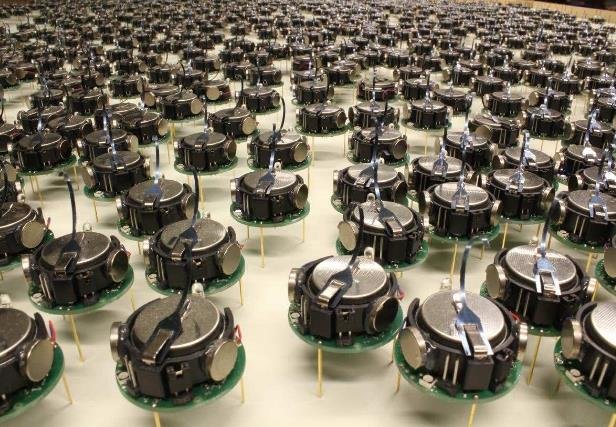A team of researchers from the University of Washington has developed a novel sound control system that uses a swarm of robotic microphones to create distinct speech zones in a room. The system, which can track and separate multiple speakers and conversations, has potential applications in smart homes, offices, and public spaces.
The system consists of a shape-changing smart speaker that can deploy and retract a network of small robotic microphones, each about an inch in diameter. The microphones use high-frequency sounds, similar to bat navigation, to avoid obstacles and distribute themselves across various surfaces in the room. The system can then use the microphones to locate and isolate specific voices and separate overlapping conversations, even if the speakers have similar voice tones or are close to each other.

The system relies on deep-learning algorithms that use the time-delayed signals from the microphones to separate and track the speech of each person in the room. The algorithms can also adjust the microphone positions dynamically to optimize the sound quality and control.
Advantages of the Robotic Acoustic Swarm
The researchers claim that their system offers several advantages over existing sound control technologies, such as consumer smart speakers or conventional microphone arrays. For instance, the system can:
- Create active zones, where only people in certain areas can interact with devices or services using voice commands.
- Mute zones, where the system blocks out unwanted sounds or conversations from other areas.
- Enhance privacy and security, by avoiding the need for cameras or visual cues to identify speakers or control sound.
- Improve audio quality and clarity, by reducing noise and interference from other sources.
- Adapt to different environments and scenarios, by automatically deploying and retracting the microphones as needed.
Potential Applications and Challenges
The researchers envision that their system could be used in various settings where sound control and management are important, such as:
- Smart homes, where users could customize their audio preferences and interactions with smart devices and services.
- Offices, where workers could conduct meetings or conversations without disturbing others or being disturbed by others.
- Public spaces, where people could enjoy different types of audio content or services without interfering with each other.
However, the system also faces some challenges and limitations, such as:
- The cost and complexity of manufacturing and maintaining the robotic microphones.
- The ethical and social implications of using such a system, especially regarding privacy, consent, and accountability.
- The compatibility and interoperability of the system with other devices and platforms.
The researchers plan to further develop and test their system in real-world scenarios and address these challenges. They also hope to collaborate with industry partners to commercialize their technology.
